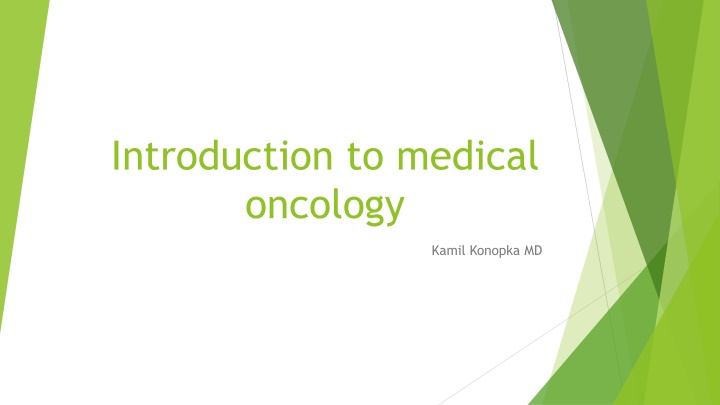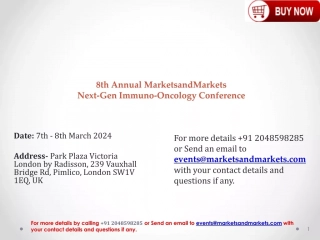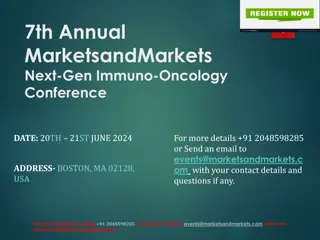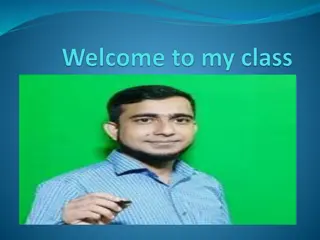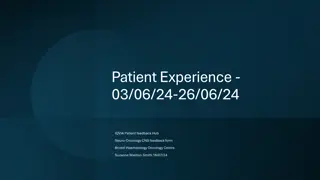Introduction to Medical Oncology by Kamil Konopka, MD
Delve into the world of medical oncology with Kamil Konopka, MD, as he expertly guides students through essential topics such as SAES, rotations, workshops, radiotherapy, and examinations. Learn about practical exercises, SAES presentations, workshops on chemotherapy-related issues, and the important principles of oncology. From diagnosing different types of cancers to understanding treatment intentions, this comprehensive course prepares students for the challenges of the oncology field.
Download Presentation

Please find below an Image/Link to download the presentation.
The content on the website is provided AS IS for your information and personal use only. It may not be sold, licensed, or shared on other websites without obtaining consent from the author.If you encounter any issues during the download, it is possible that the publisher has removed the file from their server.
You are allowed to download the files provided on this website for personal or commercial use, subject to the condition that they are used lawfully. All files are the property of their respective owners.
The content on the website is provided AS IS for your information and personal use only. It may not be sold, licensed, or shared on other websites without obtaining consent from the author.
E N D
Presentation Transcript
Introduction to medical oncology Kamil Konopka MD
Introduction Always ask Have: white coat, stethoscopes, students' ID with you Be on time Try to pick up practical things What is SAES? What are rotations ? And what are they for Workshops? PBL Exam
Exercises Department of medical oncology, niadeckich 10 str, 2nd floor Meeting point : registration Rotation
SAES The topics of these presentations should be chosen by students from the available list : 1. Bowel obstruction in cancer patients 2. VTE and cancer 3. Oncoemergency: increased intracranial pressure 4. Pericardial tamponade due to malignant pericardial effusion Students are asked to divide into 4 equal groups (per each SAES meeting) and prepare ppt. The time is 7-10 minutes for presentation plus 1-2 minutes for discussion/questions, which means no more than 12 slides (including hello and thank you slide; Not only the presentation itself, but also the way it is presented are taken into consideration.
Workshops Chemotherapy related diarrhea Nephrotoxicity and bladder injury Chemotherapy induced nausea and vomiting Dermato-toxicity (Acne-like rash and secondary skin malignancy in cancer treatment) Immune-related adverse reaction
Radiotherapy Prokocim, Wielicka str. (University Children s Hospital of Cracow ) Sala pod witra em Lecture room under stained-glass
Exam Last day of course 50 single answer questions. Cowered in presentations
Oncologist a simple person 3 questions rule 1. Is it a cancer? Principles 2. What type of cancer (WHERE is primary)? 3. What is the intention of treatment? When to stop/ why not to start the treatment?
Adenocarcioma Squamous cell carcinoma Type Sarcoma Lymphoma and leukemia etc
Histopathology Type of cancer define type of treatment Adenocarcinoma of esophagus Squamous cell cancer of esophagus Subtype not that important A bit obsolete
Staging Tumor Local invasion Adjacent tissue Nodes Metastases TNM staging system How big is it?
TNM T(umor) Size, depth of invasion etc N(odes) Only local/regional Number, size, localization M(etastases) Single, multiple
Grade Grade I Grade II Grade III Grade IV How aggressive it is? A bit obsolete, but still important
Cancer What is our intention? Curative Palliative Our methods? Our aggressiveness?
Curative Localized solid tumors Oligometastases Extremely chemosensitive tumors Testicular cancer Some lymphomas and leukemia's
Palliative Stage IV solid tumors When radical treatment of metastases is not feasible Locally advanced tumors When radical treatment is not possible Patient in poor general condition not feasible for curative treatment
Cancer Palliative Palliative Palliative chemotherapy in colon cancer stage IV OS from 6 months to 2-3 years Palliative care = hospice care
Principles Explain the principles of treatment over your patient on every level of disease Evaluate the prognostic factors: tumor s location, staging, grading, failure of primary treatment, length of time from the treatment to relapse, PS, nutrition Individualize plan of treatment Treat the patient not only the disease: coping with physical symptoms; identification of situations when secondary, negative effects are stronger; psychological support Radical and palliative treatment
Principles Patients treated at the comprehensive cancer center have considerably better survival than those treated in a local hospital! (Harding et al, 1993, Junior et al, 1994, Gillis et al, 1996)
Oncology Surgical oncology Radiation oncology Medical oncology
Medical oncology Not an universal speciality Medical oncology (drugs, PL, UK, FRA) Clinical oncology (drugs + radiotherapy, UK) Hematooncology (cancer + leukemia, Ger) Surgical oncology, gynecological oncology (drugs + surgery, PL)
Modalities Knife Beam Drug Goal? Eradicate all cancer cells Do not kill patients
Modalities Are all methods of treatment equal? Surgery> Radiotherapy> Systemic treatment
Drugs Chemotherapy Hormonotherapy Targeted treatment Immunotherapy TKI inhibitors Monoclonal antibodies etc
Subjective efficacy index Authors own reflection Not a true index Do not use it outside of this presentation Antibiotics = 10/10
Cytotoxic chemotherapy Old Cheap Toxic Spearhead treatment Subjective efficacy index =5/10 .. Probably will not evolve too much . Still a cornerstone
Hormonotherapy Old Cheap Safe weapon only effective against special types of enemies SIE 8/10 only effective in small group of diseases probably will not evolve to much
Targeted treatment Modern Expensive 100k $ for ipilimumab 10k $/month for vemurafenb Sniper gun SEI 6/10 probably will evlove but not yet evolved
Chemotherapy Curative Testicular cancer, lymphomas Neoadjuvant, adjuvant, concurrent To enhance efficacy, shrink tumor, decrease risk of recurrence Palliative To increase survival To maintain QoL To decrease symptoms of disease
Chemotherapy Is treatment successful RECIST (Response evaluation criteria in solid tumors) CR complete response PR partial response (>30%) SD- stable disease PD progressive disease
DNR Do not resuscitate No such law in Poland Persistant therapy
Tumor markers Less useful than you may think Screening of healthy population false/true Diagnosis of a malignancy false Determining the prognosis true Monitoring of patient during/ after treatment - true
Tumor markers Germinal tumors B-HCG , AFP, LDH Colon cancer > CEA , Ca 19-9 Prostate ca > PSA Medullary thyroid cancer > calcitonin Ovarian cancer > Ca 125, HE4 Pancreatic cancer > Ca 19-9 Gastric cancer > Ca 19-9, CEA Hepatocellular cancer > AFP Breast ca > Ca 15.3
Definitions Prognostic factor Predictive factor
Definitions Factors Prognostic factor tells us about disease Predictive factor tells us about treatment
Definitions OS (overall survival) Time from diagnosis to death PFS (progression free survival) Time from initiation of treatment to progression or death 1y, 3y, 5y-survival RR (response rate) RECIST PR+CR CTC AE (common toxicity criteria of adverse events)
CTC AE G1, G2 mild G3, G4 severe G5 - fatal
PS (Zubrod scale) PS0 asymptomatic PS1 symptomatic, but in good condition PS2 -<50% daytime in bed PS3 ->50 of daytime in bed PS4 bedbound PS5- dead
Guidelines NCCN ESMO PUO
